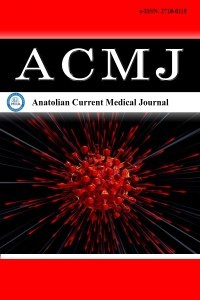1.
Elzanaty AM, Patel N, Sabbagh E, Eltahawy EA. Patent foramenovale closure in the management of cryptogenic stroke:a reviewof current literature and guideline statements. Curr Med ResOpin. 2021;37(3):377-384.
2.
Kent DM, Thaler DE, and RoPE Study Investigators. The Risk ofParadoxical Embolism (RoPE) Study: developing risk models forapplication to ongoing randomized trials of percutaneous patentforamen ovale closure for cryptogenic stroke. Trials. 2011;12:185.
3.
Erdoğan A, Genç Ö, Demirtola AI, et al. Assessment of clinicaloutcomes after percutaneous patent foramen ovale closure inadult patients diagnosed with cryptogenic stroke. East J Med.2023;28(4):783-789.
4.
Jurczyk D, Macherey-Meyer S, Rawish E, et al . New-onset atrialfibrillation after percutaneous patent foramen ovale closure:ameta-analysis. Clin Res Cardiol. 2023;112(12):1824-1834.
5.
Kent DM, Saver JL, Kasner SE, et al. Heterogeneity of treatmenteffects in an analysis of pooled individual patient data fromrandomized trials of device closure of patent foramen ovale afterstroke. JAMA. 2021;326(22):2277-2286.
6.
Leclercq F, Odorico X, Marin G, et al. Atrial fibrillation screeningon systematic ambulatory electrocardiogram monitoring afterpercutaneous patent foramen ovale closure: a prospective study.Int J Cardiol Heart Vasc. 2021;20:37:100919.
7.
Rigatelli G, Zuin M, Pedon L, et al. Clinically apparent long-termelectric disturbances in the acute and very long-term of patentforamen ovale device-based closure. Cardiovasc Revasc Med.2017;18:118-122.
8.
Alaeddini J, Feghali G, Jenkins S, et al. Frequency of atrialtachyarrhythmias following transcatheter closure of patentforamen ovale. J Invasive Cardiol. 2006;18:365-368.
9.
Flaker GC, Belew K, Beckman K, et al. Asymptomatic atrialfibrillation:demographic features and prognostic informationfrom the Atrial Fibrillation Follow-up Investigation of RhythmManagement (AFFIRM) study. Am Heart J. 2005;149:657-663.
10.
Ibisoglu E, Boyraz B, Güneş ST, et al. Impact of surgical weightloss on novel P-wave-related variables which are nominatedas predictors of atrial arrhythmias. Pacing Clin Electrophysiol.2021;44(9):1516-1522.
11.
Palano F, Adduci C, Cosentino P, et al. Assessing atrial fibrillationsubstrates by p-wave analysis: a comprehensive review. HighBlood Press Cardiovasc Prev. 2020;27(5):341-347.
12.
Bagliani G, Leonelli F, Padeletti L. P wave and the substrates ofarrhythmias originating in the atria. Card Electrophysiol Clin.2017;9:365-382.
13.
Chousou PA, Chattopadhyay R, Tsampasian V, Vassiliou SV,Pugh PT. Electrocardiographic predictors of atrial fibrillation.Med Sci. 2023;11(2):30.
14.
Chobanian AV, Bakris GL, Black HR, et al. Treatment of highblood pressure. National high blood pressure education programcoordinating c. Seventh report of the joint national committee onprevention, detection, evaluation, and treatment of high bloodpressure. Hypertension. 2003;42:1206-1252.
15.
Expert panel on detection, evaluation, and treatment of highblood cholesterol in adults. Executive summary of the thirdreport of the National Cholesterol Education Program (NCEP)expert panel on the detection, evaluation, and treatment of highblood cholesterol in adults (Adult Treatment Panel III). JAMA.2001;285:2486-2497.
16.
Varotto L, Bregolin G, Paccanaro M, De Boni A, Bonanno C,Perini F. Network meta-analysis on patent foramen ovale:is astroke or atrial fibrillation worse? Neurol Sci. 2021;42:101-109.
17.
Ahmad Y, Howard JP, Arnold A, et al. Patent foramen ovaleclosure vs. medical therapy for cryptogenic stroke:a meta-analysisof randomized controlled trials. Eur Heart J. 2018;39(18):1638-1649.
18.
Sanna T. Long-term monitoring to detect atrial fibrillationwith the indwelling implantable cardiac monitors. Int J Stroke.2018;13(9):893-904.
19.
Schnabel RB, Marinelli EA, Arbelo E, et al. Early diagnosis andbetter rhythm management to improve outcomes in patients withatrial fibrillation:the 8th AFNET/EHRA consensus conference.Europace. 2023;25(1):6-27
20.
Choi SE, Sagris D, Hill A, Lip GYH, et al. Atrial fibrillation andstroke. Expert Rev Cardiovasc Ther. 2023;21(1):35-56.
21.
Elgendy AY, Elgendy IY, Mojadidi MK, et al. New-onset atrialfibrillation following percutaneous patent foramen ovaleclosure:a systematic review and meta-analysis of randomisedtrials. Euro Intervention. 2019;14(17):1788-1790.
22.
Guedeney P, Laredo M, Zeitouni M, et al. Supraventriculararrhythmia following patent foramen ovale percutaneous closure.J Am Coll Cardiol Intv. 2022;15(22):2315-2322.
23.
Wagdi P . Incidence and predictors of atrial fibrillation followingtranscatheter closure of interatrial septal communications usingcontemporary devices. Clin Res Cardiol. 2010;99(8):507-510.
24.
Andersen A, Matzen KL, Andersen G, et al . Atrial fibrillationafter closure of patent foramen ovale in the REDUCE clinicalstudy. Catheter Cardiovasc Interv. 2021;99(5):1551-1557.
25.
Koutalas E, Kallergis E, Kochiadakis G, Kanoupakis E. P-waveduration as a marker of atrial remodelling in patients referred toablation for atrial fibrillation: a new stratification tool emerging?Hellenic J Cardiol. 2023;73:53-60.
26.
Bayés-de-Luna A, Bacharova J. New electrocardiographic aspectsof the P wave:Its value in clinical cardiology. Ann NoninvasiveElectrocardiol. 2023;28(3):e13053.
27.
Goda T, Sugiyama Y, Ohara N, et al. P-wave terminal force inlead V1 predicts paroxysmal atrial fibrillation in acute ischemicstroke. J Stroke Cerebrovasc Dis. 2017;26(9):1912-1915.
28.
Poh MQV, Tham CH, Chee JD, et al. Predicting atrial fibrillationafter ischemic stroke: clinical, genetics, and electrocardiogrammodelling. Cerebrovasc Dis Extra. 2022;13(1):9-17.
29.
Lebek S, Wester M, Pec J, et al. Abnormal P-wave terminal forcein lead V1 is a marker for atrial electrical dysfunction but notstructural remodelling. ESC Heart Fail. 2021;8(5):4055-4066.

